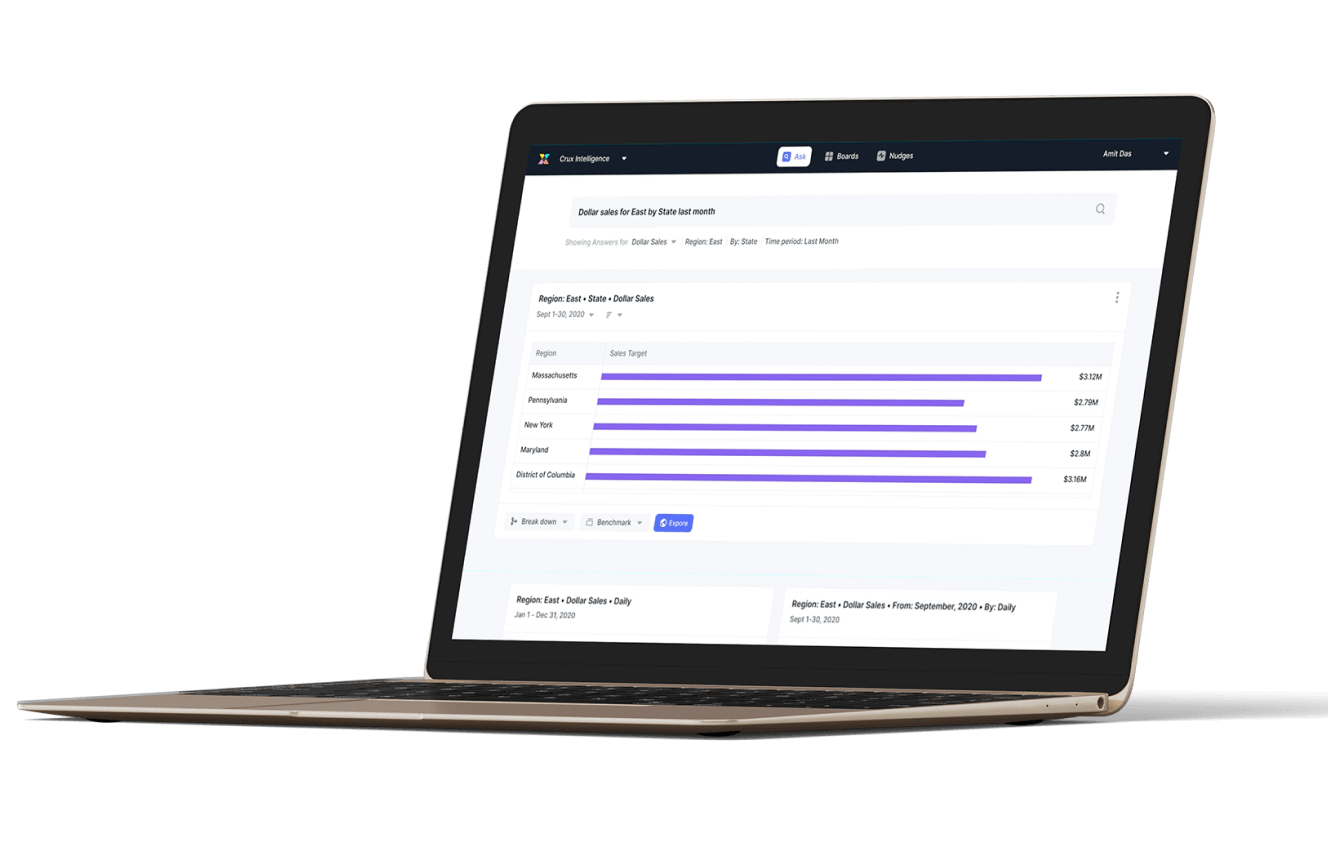Establishing a data-driven culture is top of mind for CEOs as they plan their growth strategies for the year. More businesses are expected to lean into AI solutions to revolutionize their analytics strategy in 2022, making it easier for more business stakeholders to act in real time.
There will be major shifts from how enterprise wants to receive business intelligence (BI) in 2022 and beyond, and here are four to keep in mind.
1. Not Just What But Why
Much of the modern business intelligence landscape is focused on what happened in the past. The system takes data from the last quarter, past year or whenever, and it will tell you what happened. Past-tense analysis can be useful, but it is no longer enough. Forward-thinking companies need BI systems that can answer why something happened, make suggestions about what to do and predict what may happen in the future.
2. Individualized, Curated Insights
Another common problem with many BI tools is that they offer a one-size-fits-all experience. These tools can still offer value, but we all know that different users have different needs. If a business is going to leverage data to its full potential, it will need BI tools that are flexible enough to offer individualized experiences for different users.
3. Increased Accessibility And Empowerment
Under conventional methods for BI, people would send queries to the analytics team, and they would create reports and provide feedback. You might have a standard dashboard that provides some relevant data, but you had to run it through the analytics team if you needed anything beyond that. This would create bottlenecks and make it so the insights were less accessible to the average user.
4. Mobile BI Brings Ubiquity
BI users no longer need to be stuck to a desk when they need insights. Every user at your company uses a mobile phone and they might do business from when they are away from the office. In the modern business environment, you might even have users that do some or all of their work away from the office.
Organizations that embrace the use of AI-driven BI tools will be best poised to capitalize on their increasing in-house datasets and expand remote workforces to grow in this dynamic business environment.

Read this full article for a deeper dive into these 4 trends on Forbes here.







